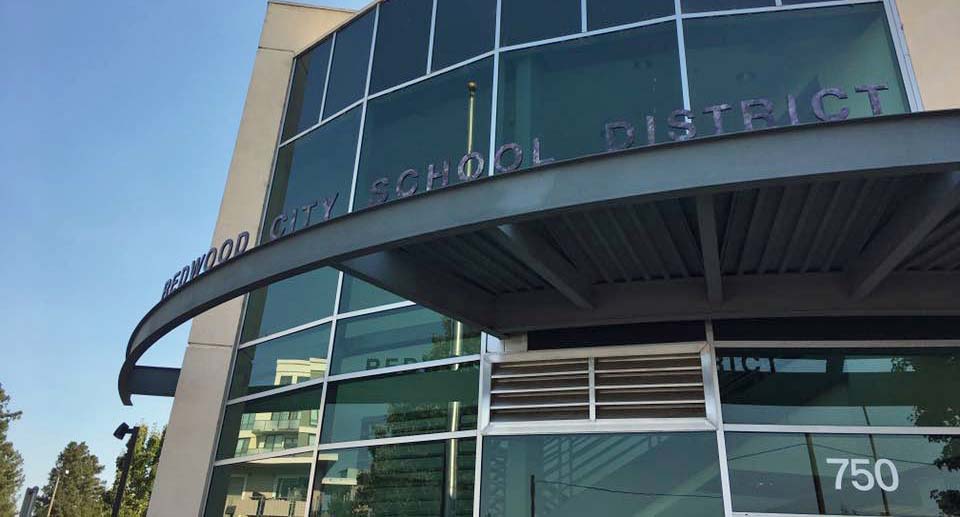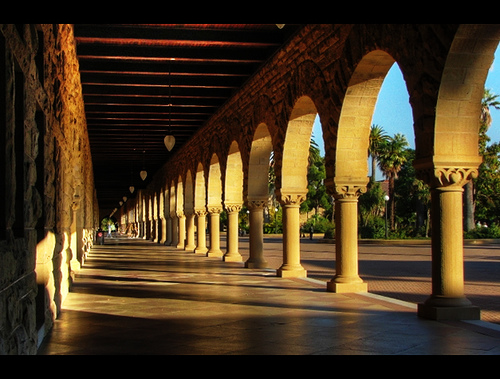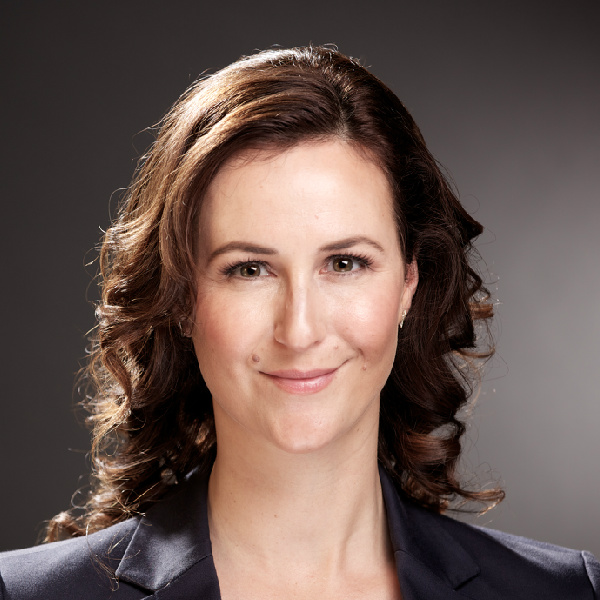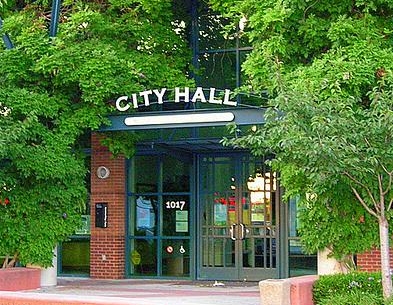Entertainment Galore, But… How can downtown Redwood City become a shopper’s paradise?

By Scott Dailey
Two years ago, the City of Redwood City asked 476 residents where they shopped. Guess how many patronized stores downtown. How about 200? Too high? Maybe 100? Try 15.
That’s right. In a downtown district that one local merchant describes as “hopping,” with crowded restaurants, bars and coffee shops, a huge cinema complex, a well-attended regional theater, new high-rise apartments, a major employer such as Box and a central gathering place that attracts thousands of people for summer concerts and other events, just 3 percent of the survey’s respondents said they shopped there.
It might sound surprising – but the reasons turn out to be pretty simple. In comparison with downtown Burlingame or Laurel Street in San Carlos, for example, there’s just a handful of stores. And instead of being clustered in a single location, those shops are sprinkled throughout the area. That makes it difficult for customers to stroll, compare goods and window-shop. In addition, regional malls such as Hillsdale and Stanford soak up potential shoppers, as do nearby downtown districts that offer major retailers including Apple, The Gap and up-and-coming chains such as Lululemon.
Then there’s competition from other retail zones in Redwood City, principally along El Camino Real, Woodside Road and Veterans Boulevard. There, reported rents for retail storefronts run approximately 30 percent cheaper than downtown, attracting business people and their customers to such locations as Woodside Plaza, Kohl’s Center and other open-air malls.
Indeed, even with the relative lack of shopping downtown – that is, principally along Broadway and nearby thoroughfares from El Camino to Veterans Boulevard and Brewster Avenue to Maple Street – retail business in general appears healthy in Redwood City. Because of the way business categories are grouped together, sales tax revenues represent an imprecise measure of retail shopping; that said, the city government received nearly $19.5 million in sales tax revenues in 2017. Of that, around 30%, or nearly $5.9 million, came from general retail sales (as opposed, for example, to business-to-business sales, car sales and sales in construction and other sectors). In turn, that translates to roughly $590 million in business for the city’s retail shops, restaurants and other such establishments (cities receive one percent of gross sales as their share of California’s basic 8.5 percent sales tax). According to city economic data, the largest geographic contributor to Redwood City’s sales tax revenues was Redwood Shores, which generated $2.3 million. Downtown was second, with more than $1.3 million.
Catherine Ralston, the city’s economic development manager, reports that even with the downtown district’s higher rents, the retail vacancy rate there is just 2.5 percent. (“Retail” in this sense refers to everything from shops to restaurants, nightclubs, dance studios and hair salons.) Although she counts herself among those who wish for more shopping downtown, she cautions it may not happen soon.
“In downtown, rents are very high,” she observes, quoting average monthly rates of $4 to $5 per square foot for retail space. “Restaurants are able to support those rents, but not necessarily retail. You have to sell a lot of items to keep that rent up on a regular basis, versus a restaurant or a bar, where you get a lot higher customer turnover and sales happening.”
How much does a retailer need to sell in order to justify a given rent? Michael Berne, principal of Berkeley-based retail planning and real-estate firm MJB Consulting, says sales need to be approximately 10 times the rent. Throw in additional overhead such as insurance, utilities and other expenses, and the multiplier grows to perhaps 12. At a monthly rent of $4.50 per square foot, that comes to minimum monthly sales of $54 per square foot. If business owners can afford those rates, Berne says, they can consider a class-A mall where their stores can cluster with others of their ilk.
“Rent is a very big factor,” confirms Scott Dewar, whose consultancy, Site Perfect Solutions, helps businesses select locations. “It’s huge in terms of people making their decisions.”
Even more than rents, however, the lack of clustering may be affecting downtown Redwood City’s shopping prospects.
“When there are large clusters, more retailers want to be there and the clusters get even larger,” says Berne, who gave a presentation about retail business to the Redwood City Council last August. “So you see these concentrations, whether it’s at Stanford Shopping Center or Valley Fair (in San Jose) or Burlingame Avenue or Union Square or Fillmore Street (in San Francisco).
“Downtown Redwood City right now doesn’t have an existing cluster to play off of, at least with stores selling goods,” Berne continues. “If it had 15 clothing stores, for instance, that would be one thing, because the sixteenth would want to be there. They’d want to be able to take advantage of all the people who were coming there to shop. But since it doesn’t have 15, it’s not as much of a shopping destination as retailers aren’t as eager to be there, and you’re fighting something of an uphill battle.”
Ralston agrees with the clustering concept, but says, “The other piece is, I don’t have vacancies right now to put a cluster of retail stores in. It’s one here and one there. Ultimately, we can get to that goal. But it’s going to take a really long time.”
Berne says building a successful retail shopping district is an evolutionary process that has stages in which retailers start to arrive, prosper and attract others. Those phases, Berne says, include drawing first not major retailers such as Apple and The Gap, but “maybe boutiques or small, local chainlets, so that you’re starting to build that cluster. And if boutiques and small local chainlets start to perform and do really well, larger chains will start to take notice. And then you’ll get interest from the early adopting chains, and then, over time, you could become another Burlingame Avenue.”
Burlingame Avenue. That’s what people often say when they’re asked how they want downtown Redwood City to look. So how did downtown Burlingame become what it is today – a thriving retail district with more than 500 businesses, from mom-and-pop stores to major chains such as Apple, J. Crew, Pottery Barn and others?
Cleese Relihan, Burlingame’s economic development specialist, points to numerous elements, including steady foot traffic, a large streetscape project completed in 2014, the presence of supporting professionals such as attorneys, business advisors and accountants, the city government’s relationships with present and potential business owners, and, not least, a variety of store sizes.
“There’s a lot of flexibility on Burlingame Avenue for larger and smaller spaces,” Relihan says. “That’s come up in a lot of discussions I’ve had with brand names.”
With its retail vacancy at just 2.5 percent, downtown Redwood may lack that type of available space. And what Relihan doesn’t mention is the concentration of wealth in Burlingame and especially neighboring Hillsborough, which has no commercial district of its own. Redwood City, on the other hand, is more economically diverse. That said, it’s not poor, either, and Atherton sits just next door. But downtown Redwood City does face significant competition on the Peninsula from other places that attract retailers who decide rationally about where to set up shop.
Dewar, the location expert, says those decisions tend to focus on several factors. Included are the service area, demographics and their fit for a particular business (Neiman-Marcus and Target are looking for different customers), the presence of competition, and the site itself – especially how easy it is to get to and who else is around to help drive business.
“I think one of the differences between a downtown location and a (shopping center) is the draw potential,” Dewar says. “You also have potentially a different proximate customer base. Downtown, you might have more businesses with people from offices and such. Is that appropriate (for a given business) – is that who you’re looking for?”
In a sense, Redwood City’s recent strategy for developing its downtown has been the opposite of the famous line from “Field of Dreams” – “If you build it, they will come.” Instead, by seeking residents in large apartment complexes and employees at organizations such as Box and the coming headquarters of the Chan Zuckerberg Initiative, it’s been more like, “If people come, retailers will follow.” So far, that’s worked especially for restaurants, which are indeed clustered along Broadway and Theatre Way, and whose patrons jam sidewalk dining areas even in winter. Restaurants, in fact, benefit from two shifts – the lunch bunch from downtown offices and the dinner trade from nearby residents. They also profit, Dewar says, from variety, because people often want to try something different.
Volker Staudt sees the service-versus-shops issue from both angles. Along with his wife, Mary Ann, he owns Gourmet Haus Staudt on Broadway – a combination German restaurant and grocery-and-gift store. With more people coming – and living – downtown, both businesses are flourishing.
“It’s no longer Deadwood, it’s Redwood,” Staudt says. ”For a person owning a business on Broadway, everything’s been pretty positive, in my opinion.”
That said, Staudt adds, “I wish there were more retail. But I get why there is no more retail. It’s tough to be in the retail business, with Amazon and everything else going on, and the cost per square foot to operate in this environment.”
Cost per square foot – in other words, rent. In interviews with merchants, the “R” word kept coming up. Steve Goetz, who recently moved his family’s decades-old Goetz Brothers sporting-goods store from Broadway to the industrial east side of San Carlos, cited concerns that “we were going to be priced out” among the many factors that led to relocating his business. (The others included a need for more space, more parking and freeway access for a regional customer base.) Even so, he says, “Both communities have been really good to us. We hated to leave Redwood City.”
Retailer Stephanie Kolkka also relocated her business, Brick Monkey2, to Theatre Way after the building on Broadway where she operated the original Brick Monkey store was sold in January 2017 and the rent increased dramatically. Brick Monkey2 specializes in clothing and jewelry, and stays open late to catch the crowds coming out of adjacent restaurants and the Cinemark movie multiplex.
Although she felt forced to move, she says when it comes to rents, “I get it. I understand that if I owned a building down there, I’d want to get the maximum out of it.”
And even with the relatively high retail rents downtown compared with other parts of the city, building owners are not necessarily maximizing their investments. Ralston, the city’s economic development manager, says rents even for non-premium office space downtown are topping $8 per square foot, as opposed to the $4-to-$5 range for retail. To promote retail business and prevent downtown from converting strictly to office space, the city has zoned the first floors of buildings on Broadway and Main Street as retail-only.
Even that move arouses suspicions among retailers who are skeptical of downtown landlords. One merchant said he thought building owners would keep first-floor rents artificially high, and then, failing to rent to retail businesses, would ask the city to permit ground-floor offices again.
To that, Ralston says, “There may be a few landlords who may try that. I think at the city, at this point, we’re seeing that there is enough interest in those spaces. So we’re not going to quickly jump and let office uses go back in on the ground floor.
Ralston says, in fact, that the city government is seeing so much interest from potential downtown businesses that it’s currently not recruiting additional retail establishments to locate there. At the same time, she’s aware of the desire for more retailers, and the city is now forming a retail task force to create a vision for retailing in Redwood City. The group is expected to begin meeting this month, and should report its findings to the Council by year-end.
Rather than seek certain business types, Ralston says, “It’s really great to let that kind of naturally happen, because those are businesses that are ready to be a business downtown. They can support those higher rents, they’ve done their market studies, they know that this is the place that they want to be. And so those often times are your more successful businesses (rather than those that the city might try to bring in) that may not be ready for this market.”
Ralston says Internet-based sales may be part of the reason why brick-and-mortar retail stores aren’t at the top of the list of businesses looking at Redwood City, although she also says shop owners are adjusting to the challenge posed by e-commerce. For example, Jim Hornibrook of outdoor-gear supplier Redwood Trading Post notes that his business is developing a website that will lead customers into the store after they find what they want online.
Another necessity – as vital as adjusting to the Internet – is parking. Ralph Garcia, the owner of Ralph’s Vacuum and Sewing Center on Main Street, notes its importance for retailers, especially those who serve customers from around the Bay Area, as he does. Garcia’s business includes a parking lot, but, he says, “I feel for the other folks who don’t have parking, or whose customers may have difficulty finding parking or may have to pay for it.”
Ralston says gripes about a perceived lack of parking downtown – a common grievance of shoppers and business people alike – disappeared after the city installed electronic signs showing the number of spaces available at garages.
“Several years ago, people would have said there’s no parking downtown,” she says. “Within a week of those signs going up, we stopped hearing complaints that there was no parking.”
That notwithstanding, shoppers still may not be able to park on the same block as the store they’re visiting. That, Berne says, offers an advantage to shopping centers, whose parking lots can more easily cater to what he terms the “in-and-out” shopper. Downtown shopping districts, on the other hand, are built more for the strolling shopper who may want to accomplish many things in one trip.
That’s the sort of customer who drops into Holly Hill, an upscale women’s clothing and jewelry store on Laurel Street in downtown San Carlos. The shop sits on the same block as a card store, a kitchenware shop, a pet-supply-and-grooming outfit, a shoe-repair shop, a dry cleaner, a jeweler, a barber shop, several restaurants and a bank.
“I think what really works for this town, at least just from how we see customers, is that people here have many errands they run when they’re downtown,” says owner Holly Hill. “They go to the dog-food place, they get their shoes repaired, their husband gets a haircut. They stop at Hallmark and buy a card. They pick up their coffee. So it’s a real walkable, errand-running downtown. We fit right into that, and we’re a regular stop-off for many, many women who live here and around here.”
Hill says the multitasking nature of the downtown San Carlos shopper results in a high volume of foot traffic, and Laurel Street’s popular restaurants lead to what she calls “nose prints on the windows” from passers-by in the evenings. Her prescription for downtown Redwood City, where her sister and store manager Shelley Hill resides, is for three or four stores to go in simultaneously – to which Shelley Hill asks, almost rhetorically, “And where would that be?”
One location that will offer approximately 12,000 square feet of retail space is the new headquarters of the Chan Zuckerberg Initiative, currently going up on the corner of Broadway and Jefferson Avenue. (The Chan Zuckerberg Initiative is a philanthropic organization started by Facebook founder Mark Zuckerberg and his wife, Priscilla Chan. It will occupy the building’s more than 100,000 square feet of office space.) Scott Smithers, managing partner of the building’s developer, Lane Partners of Menlo Park, told the San Francisco Business Times in July that he had received “a ton of interest” from retailers.
Another prospective location sits on Main Street, between Ralph’s Vacuum and Sewing Center and Angelicas Bistro. Dubbed “851 Main Street,” the proposed four-story development would offer nearly 79,000 square feet of office space and close to 7,000 square feet for retail and parking for 246 vehicles.
More retail space – even if filled by competitors – would be a welcome sight to Elizabeth Strumpell, owner of downtown linen and gift store Pomegranate Seeds.
“We would love more competition, we would love more people here, we would love just to have more retailers on the street,” Strumpell says.
Like Kolkka, a member of the coming retail task force who describes herself as “way-pro-Redwood City,” Strumpell is high on the community. She wishes the city government would do more to attract retail stores because, she says, “Redwood City’s a great spot. I really like the town. I like the people. I like the feel. I think (the city government) has done a really nice job of balancing the residential and the office space component of things. I think it’s a nice, growing community, and kind of the heart of the Silicon Valley.”
When it comes to the importance of a vibrant downtown, Ralston gets it.
“The downtown is really the heart of the community,” she says. “I like to refer to it as the living room of the community. It’s the spot where the community can come together and gather for special events and occasions and fun things to do. And so when you have a lively downtown, it becomes that part of your home … a great, thriving downtown increases property values, and it becomes a quality-of-life piece for the entire community.”
As Staudt says, there’s no doubt the downtown district has traded “Deadwood” for “Redwood.” The new residents and employees have helped turn the area into a throbbing hub of dining and entertainment. To turn “Field of Dreams” on its head, the people have come. Now the question remains: Will the retail shops follow?









